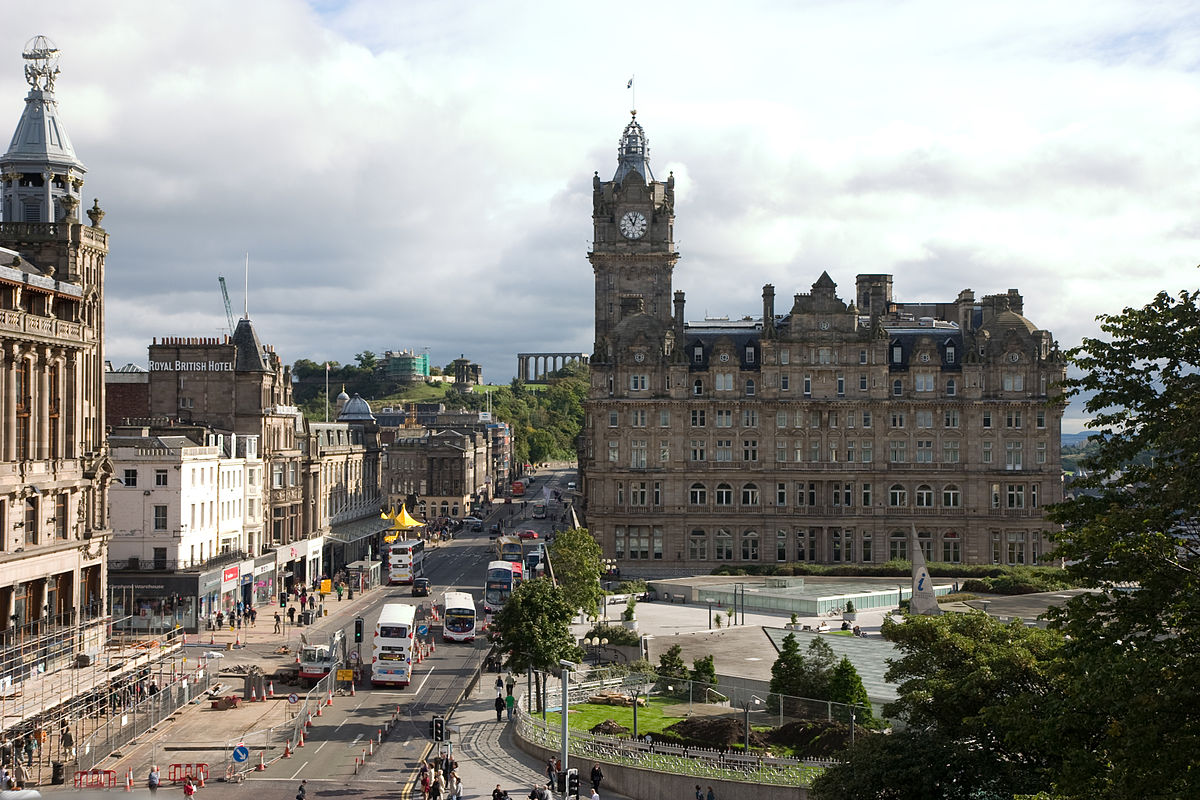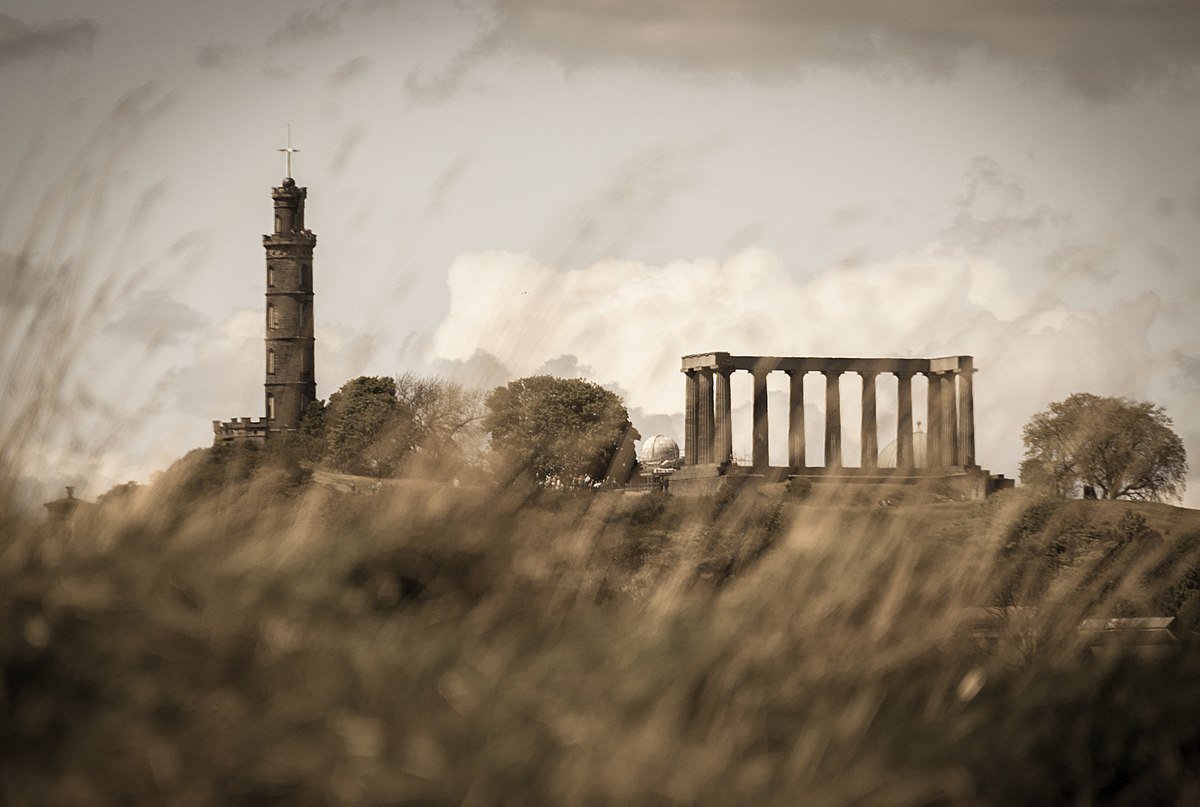
Calton Hill
Photography: Gary Campbell, Wikimedia Commons (BY-SA)
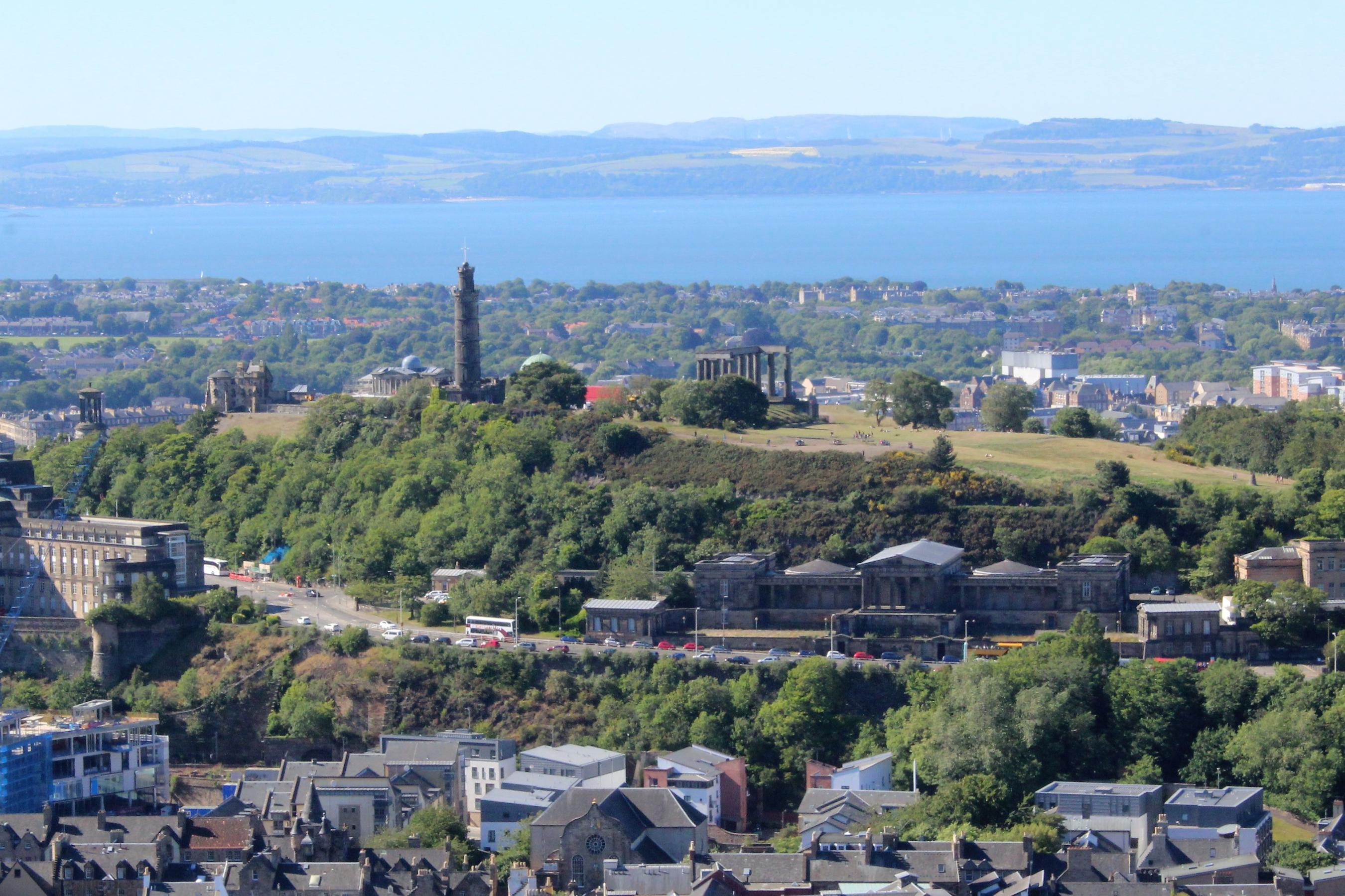
View of Calton Hill
Photography: Chabe01, Wikimedia Commons (BY-SA)

North Bridge, Calton Hill, from the Bank of Scotland
By Thomas Hosmer Shepherd, 1829
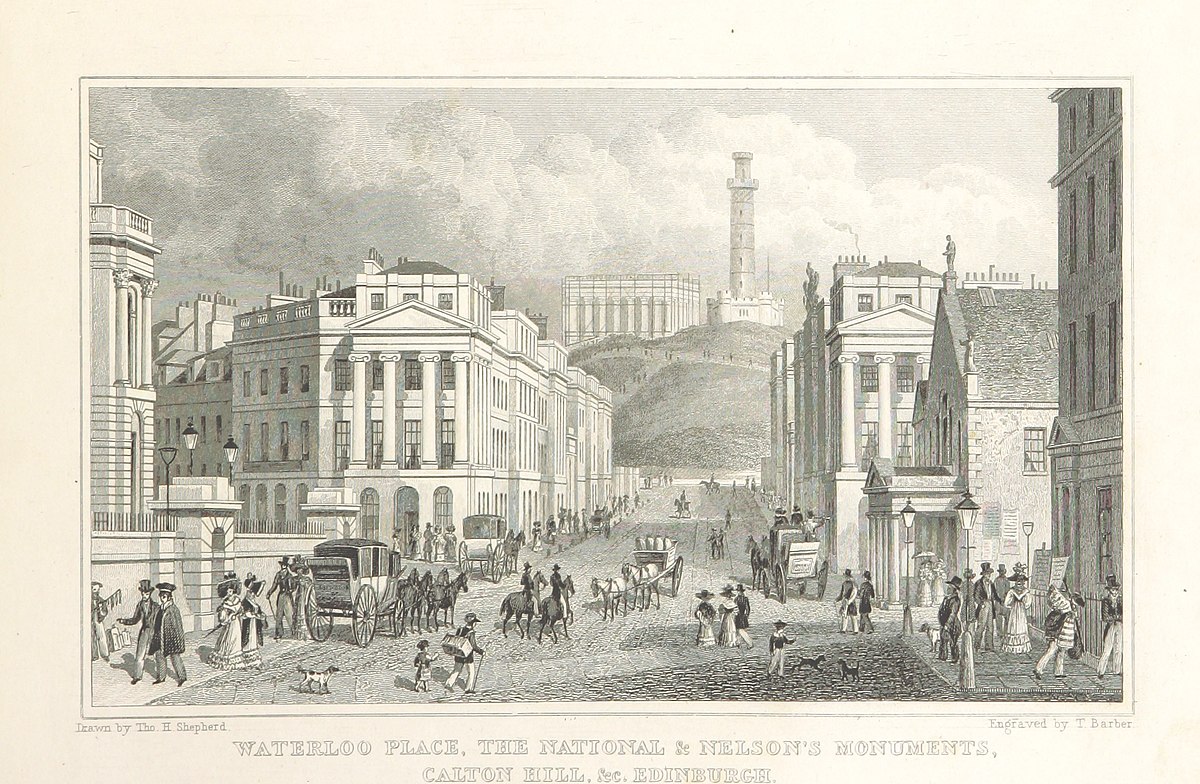
Waterloo Place, the National and Nelson's Monuments, Calton Hill, Edinburgh
By Thomas Hosmer Shepherd, 1829
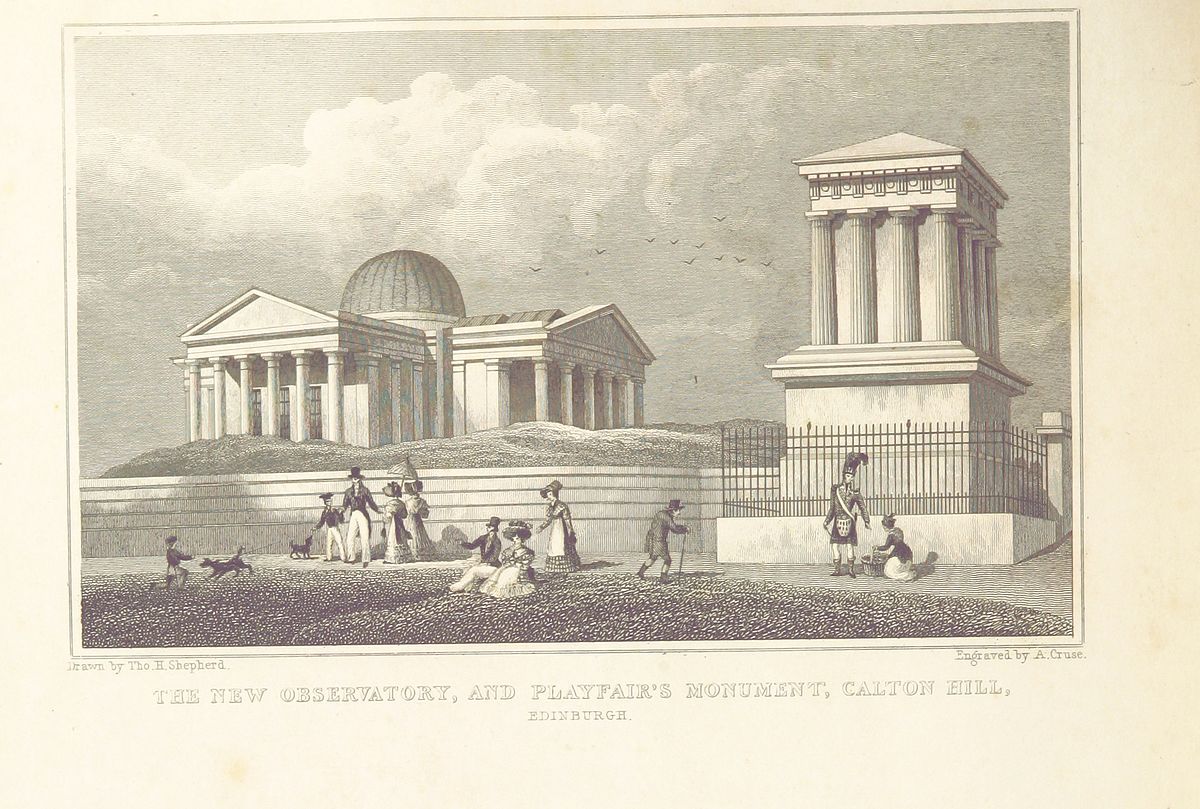
The New Observatory, and Playfair's Monument, Calton Hill, Edinburgh
By Thomas Hosmer Shepherd, 1829
Calton Hill
From the summit of Calton Hill you will have a view of central Edinburgh encompassing both the Old and New Town. There are various monuments on the hill, including the National Monument, the Nelson Monument, the Dugald Stewart Monument, the Robert Burns Monument, and the Playfair Monument. The monument to Dugald Stewart (1753–1828) was designed by William Henry Playfair (1790 – 1857). Stewart became professor of moral philosophy in 1785 after Adam Ferguson and over the following twenty-five years, he burnished its reputation as a centre of international influence. He promoted the brand of philosophy originated by Thomas Reid, Adam Ferguson, and James Beattie and known as "Scottish Common Sense Realism", based on the concept that man can invoke an innate set of common ideas interdependent with judgment. Thomas Reid described this empirical and scientific approach to philosophy as follows:
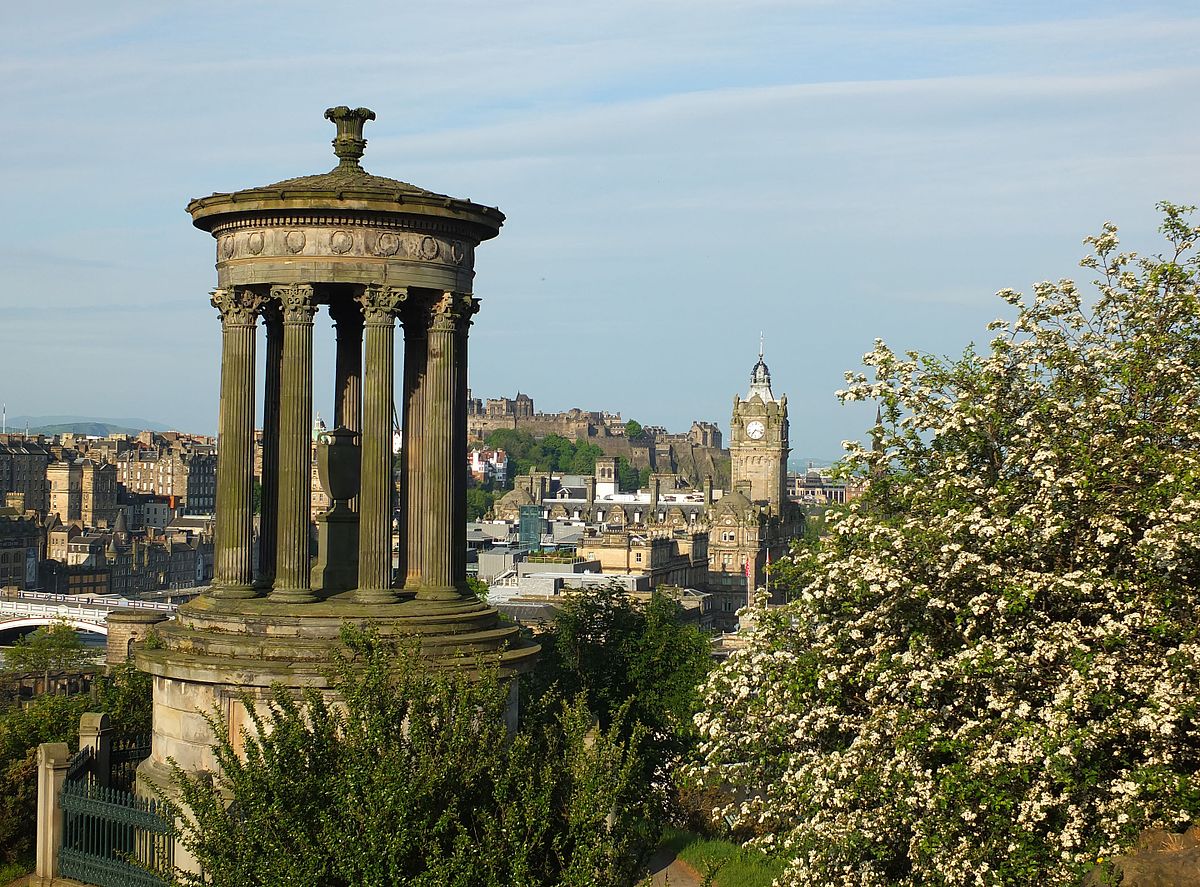
The Dugald Stewart Monument
Photography: Ad Meskens, Wikimedia Commons (BY-SA)
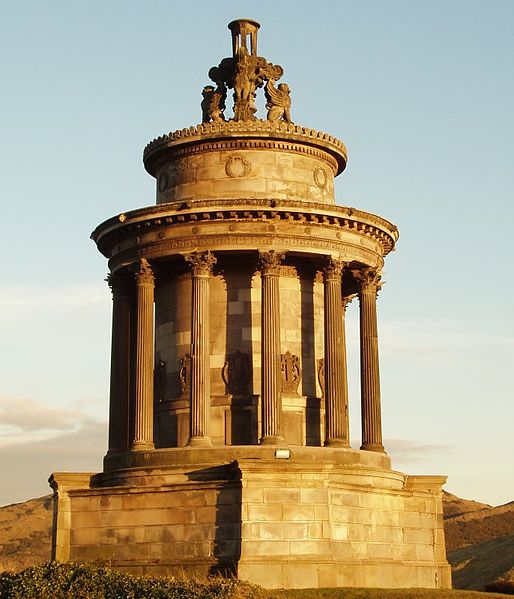
The Robert Burns Monument
Photography: no attribution, Wikimedia Commons (SA)
“If there are certain principles, as I think there are, which the constitution of our nature leads us to believe, and which we are under a necessity to take for granted in the common concerns of life, without being able to give a reason for them — these are what we call the principles of common sense; and what is manifestly contrary to them, is what we call absurd.” (An Inquiry into the Human Mind on the Principles of Common Sense, 1764).
As such it stood in opposition to David Hume’s skepticism and became influential in France and the United States, especially in relation to the thinking of the Founding Fathers. Dugald Stewart's theory of perception was also greatly influenced by Reid, but in contrast he also emphasized the value of the senses as expounded upon in detail in his Philosophical Essays.
On our Old Town Walk we saw one of the former premises of Edinburgh’s Royal High School (see the eponymous section of the Old Town Walk narrative). Now we can view the most iconic of the school’s locations, built between 1826 and 1829 by the Town Council and modelled in Greek Doric Style by Thomas Hamilton, on a temple in Athens at one time known as the Theseion in honour of Theseus, who was thought to have been buried there. However, subsequent archaeological research disputed this, and the temple was renamed the Hephaesteion after Hephaestus, god of metal working, craftsmanship, and fire. The Edinburgh School is considered the best example of the Greek revival in Scotland. Pupils graduating from the school, such as the author of this narrative, made their farewell by exiting through a marble-framed door under the portico illustrated in the photograph below. The school’s motto is Musis Respublica Floret or The State Flourishes with the Muses.
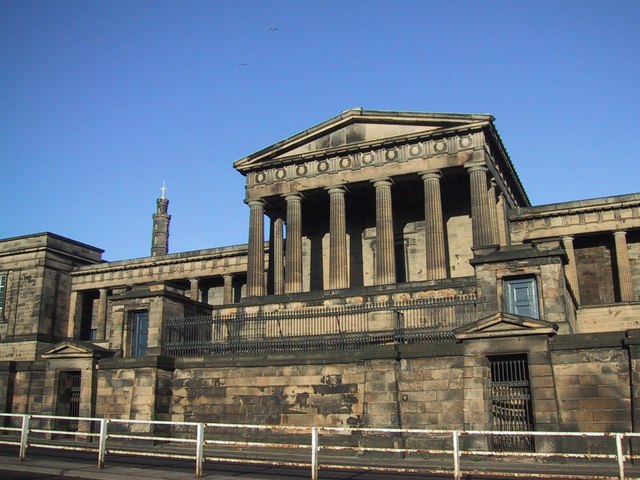
The Old Royal High School
Photography: Sarah Charlesworth, Wikimedia Commons (BY-SA)
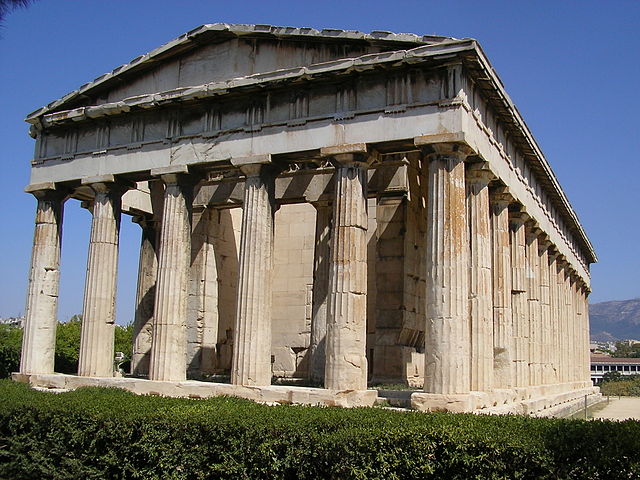
Temple of Hephaistos in Athens
Photography: Tommi Nikkïta, Wikimedia Commons (BY-SA)
Probably you will have been struck by the grand neoclassical architecture you have seen on Calton Hill. Although initially the architecture of ancient Rome inspired much of the New Town of Edinburgh, by 1800 ancient Athens became the favoured model. This is particularly evident on Calton Hill in the form of the National Monument, the Playfair Monument, the Royal Observatory and the Royal High School, all based on Greek designs. You will see further examples of Greek influence as we continue our walk along Princes Street (see section 9 below). In the 19th. century the city adopted the sobriquet "Athens of the North." To some extent this also reflected the similar topography of the two cities, both of which boast spectacular structures on impressive hills in their city centres. However, in addition, it was as much to do with the city’s growing reputation as a centre of ideas in philosophy, economics and medicine as with its physical attributes. The city’s elite were keen to throw off the Old Town’s reputation for squalor and pollution which had once earned it the nickname "Auld Reekie" in Scots or "Old Smoky" in English. Somewhat tongue in cheek, the character called Archie in Tom Stoppard’s play Jumpers (1974) suggested that Edinburgh might be more appropriately named "Reykjavík of the South", the word Reykjavik meaning "Smoky Bay."
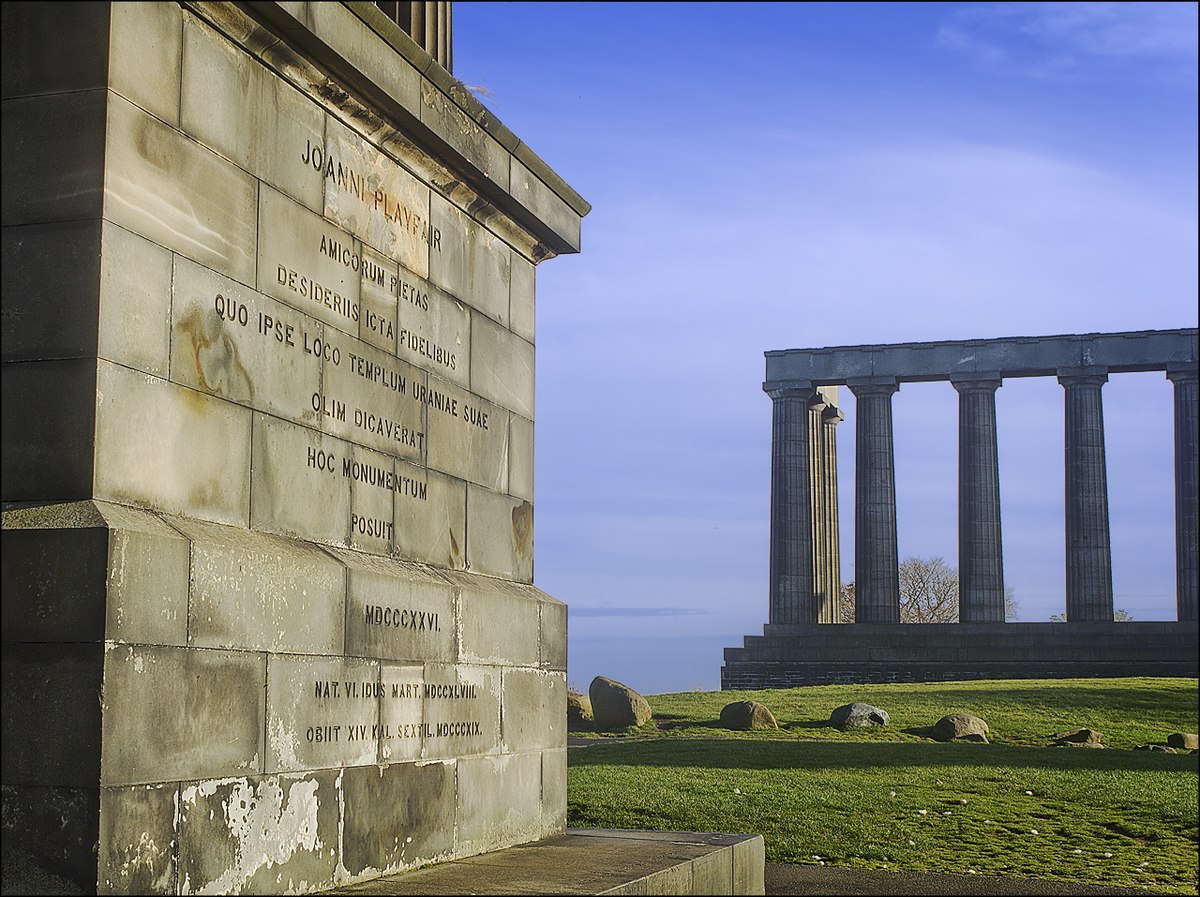
The Playfair and National Monuments
Photography: Dun Deagh, Wikimedia Commons (BY-SA)
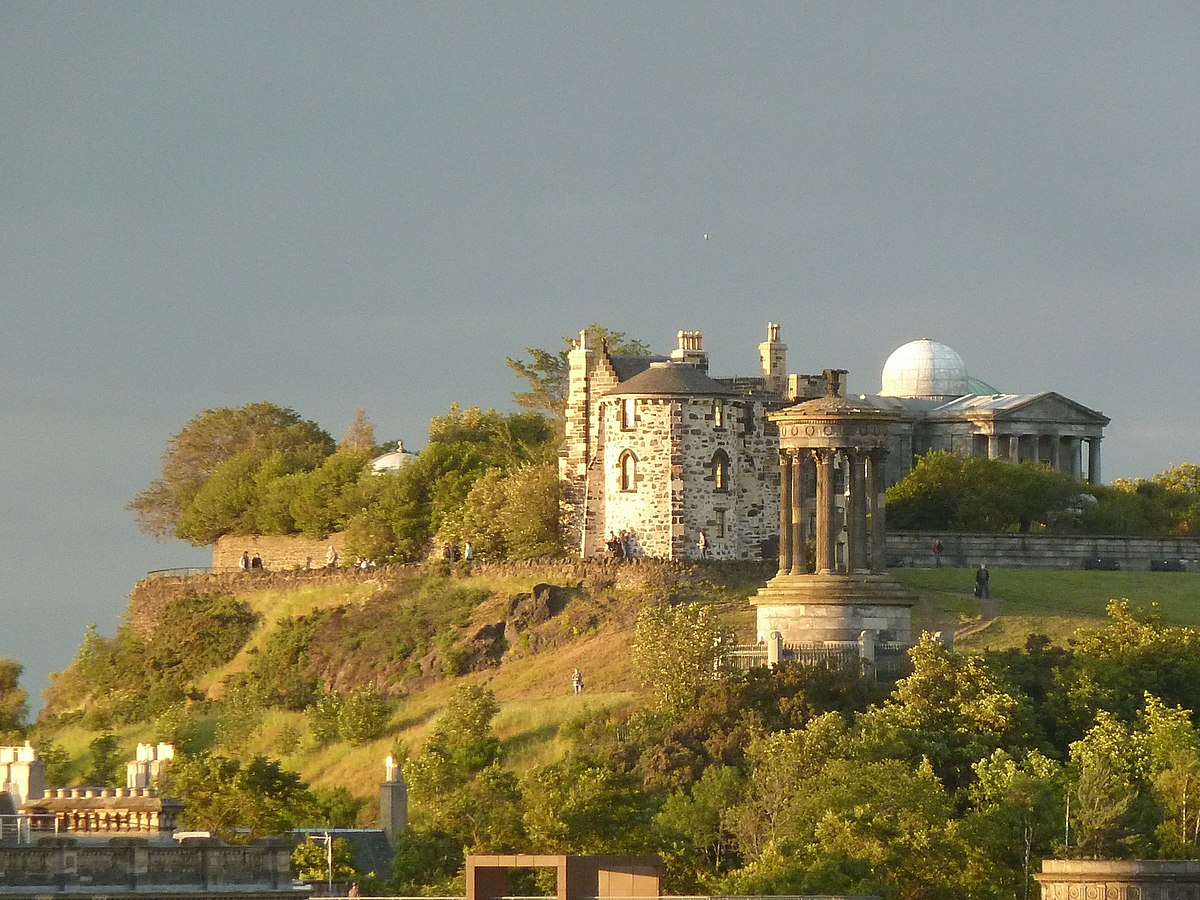
View of Claton Hill
Photography: Gyula Péter, Wikimedia Commons (BY-SA)
